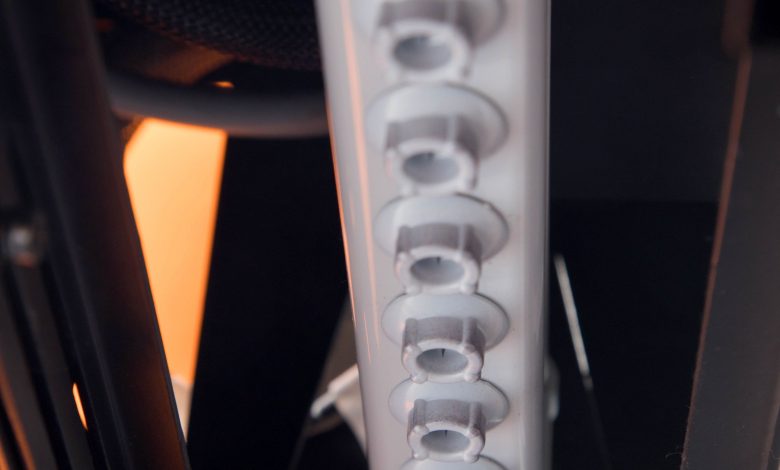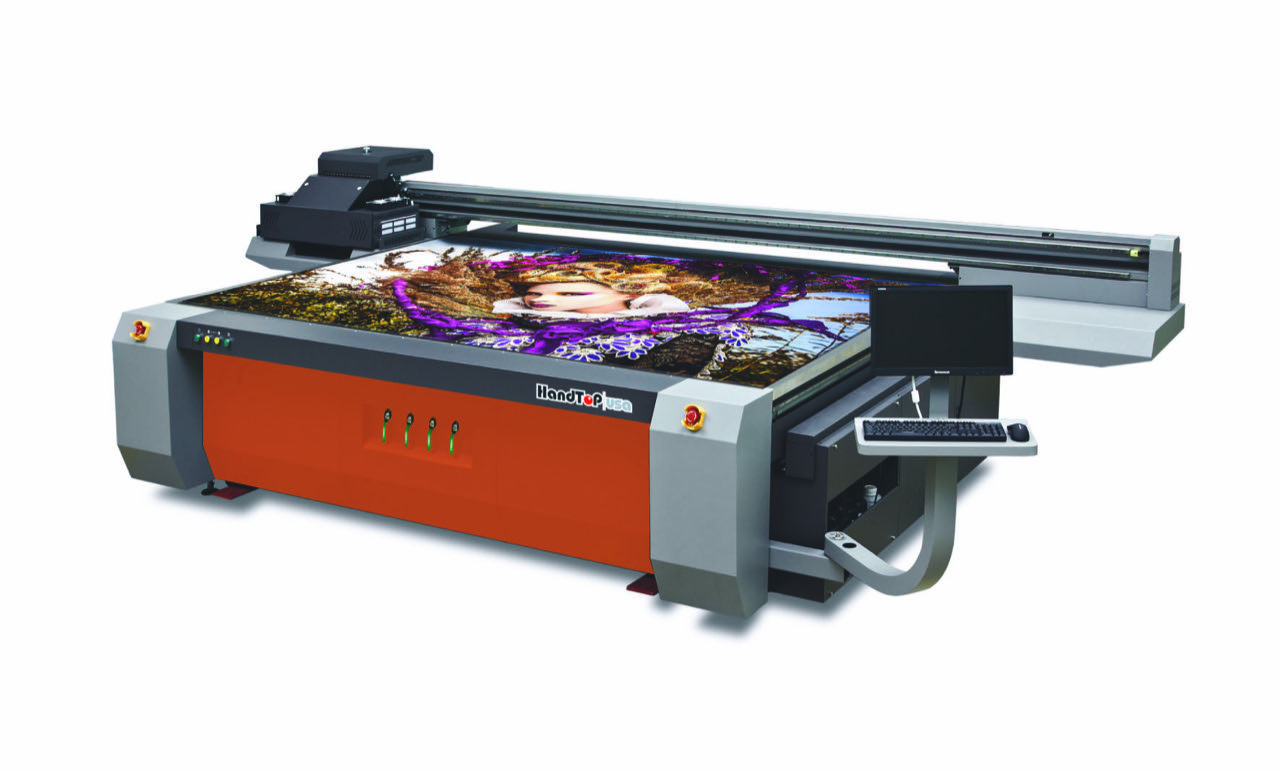Taking the Charge Out of Static Electricity
Try these solutions to help eliminate static electricity issues during print runs.
If not controlled properly, static electricity can be a major disruption to a sign shop’s business. Too much static electricity in the shop can play havoc with your production schedule and interfere with the overall printing process. It can even cause glitches with your printers and laminators.
With many shops utilizing flatbed printing capabilities, static can interfere with output quality. This is true when you are printing to rigid plastic substrates such as Sintra, corrugated plastic and styrene. There are, however, some options available to help minimize printing defects due to static and improve the quality of your output.
Some of the major issues caused by static electricity include: dust build up, improper ink manipulation and cling from substrates.
Most shop owners would probably say that the main culprit of static electricity is dust. When substrates or films are electrically charged, they will attract particles of dust and lint to them. A piece of lint on one substrate can cause a flaw in the final print.
This in turn will affect your ink manipulation. Just as static attracts dust, it can also attract or repel ink. If your substrate has static electricity, ink can either be drawn to the wrong spot, or it can fail to adhere to the proper place.
Static cling from substrates or films is another issue. When two objects are generating a static charge, they stick together. One of the places this becomes most frustrating in a print shop is with plastic sheets that are being sent through a printer. These sheets can adhere, causing printer jams or misprints.
Shocks are another problem. Anyone who has worked in a print shop long enough knows about the sometimes nasty shocks that high levels of static electricity can produce. While these shocks are generally more annoying than anything else, in more extreme cases, they can have a detrimental health effect or could even spark a fire.
To help with these issues, Sign & Digital Graphics spoke with some experts in the field.
How Static Forms?
Jason Darrah, chief inkjet evangelist at Fluid Color, Kent, Ohio, notes that static electricity is the result of positively or negatively charged atoms collecting on the surface of media. “Static can be created when a release liner is removed or media is moved, stacked, rubbed or slid.”
He says that dust attraction is one of the primary consequences of static electricity. “Static electricity attracts dust and lint to the surface of the board, which leads to print imperfections. Additionally, dust and lint can move from the board to the printheads causing clogged nozzles. Proper humidity levels (40%Â-60%) are the most effective means of reducing static electricity. Water is a conductor and higher humidity levels help release excess static electricity from media.”
Friction and Low Humidity
Ken Parsley, applications engineer at Mutoh America Inc., Phoenix, Arizona, adds that typically, static is caused by friction and low humidity. He says on a printer, static can also be released from the media. “In either case, dust and fibers are attracted to areas where static buildup is found. Humidity is the cure. When a work environment approaches 50% relative humidity (RH), static is nearly eliminated in most processes. In low humidity locations, some shops may actually add humidifiers to increase the ambient air humidity and thus limit static effects.”
Shocking Results
Parsley explains that it is normal for a printer operator to receive shocks during their normal operations because their systems may not have common grounding. “Lamination tends to produce the worst shocks because you usually have two rolls of plastic dragging across various mechanical parts causing friction as well as a plastic-like film being released from a paper or other liner, which creates static. To eliminate the shocks you can ground your laminator to your building ground and increase humidity in the environment.”
He says that static can damage prints and cause defects. “In the current inkjet world we are working with very small drops of ink (think hairspray for illustration purposes). These drops are so small they can actually be shifted from reaching the print surface properly by the static preventing them from hitting their targets. Typical static affects tend to look like ghosting (extra dots around dark text is an example). Also ink drops can gather in white areas where no ink was called for.”
He adds that because many of substrates are treated with a thin vinyl product, which in turn, can cause an increase in friction when protective linings are removed or a roll is unwound.
Parsley says there can be different issues with this problem with roll-to-roll, flatbeds and hybrid printers. “The causes and effects are the same, but the solution may be different. With most rigid media you can apply a topical anti-static to media to eliminate static. That solution is not practical for roll machines, so a better solution for that process is a Pulsed DC Ionizing Bar, which can be mounted on the printer to control static at the point of jetting.”
Soild Solutions
He reports that solutions can range from increasing humidity in your shop to a topical spray and when practical, users can install Pulsed DC Ionizing Bars on the printing equipment. “Onboard Pulsed DC Ionizing Bars come standard on our PerformaceJet PJ-2508UF 4- x 8-foot flatbed printer. The PJ 2508UF also comes standard with an automatic media registration pin system with ‘blowback’ feature for easier handling and positioning of media, in addition to the static elimination system, as well as an auto media thickness detector. The PerformanceJet 2508UF delivers outstanding output users expect and provides the reliability you need in a UV-LED flatbed, making it the smart choice for any production shop,” he notes.
Ionizing Wand
Darrah points out that in many cases, shocks to operators due to static electricity are an annoyance, however, in extreme cases, alternative methods can be employed to protect the employee such as the use of an ionizing wand.
He adds that some substrates are the most likely to carry a static charge because of what is called the corona treatment. “Some substrates receive a corona treatment during the manufacturing process to increase the surface energy of the media to produce better ink adhesion. A corona treatment involves using an electrical charge to artificially increase the surface energy. This electrical charge increases the likelihood that the media will hold a larger amount of static electricity.”
Darrah agrees that roll-to-roll, hybrid and flatbed printers can all experience static electricity-related issues. “Flatbed printers allow an operator to load the board then remove static by using a static brush or wiping the media with dryer sheets before printing. Roll-to-roll and hybrid printers can generate static when the media unwinds or moves through the printer during printing, confining static removal to the devices on the printer or the use of static elimination tinsel.”
He also says that the most effective way to control static electricity on inkjet printers is proper humidity control. “However, there are several other ways to manage static electricity including using the static elimination devices on the printer such as an ionizer bar, using a static wand, using static elimination tinsel and wiping the media with dryer sheets or diluted alcohol.”
Darrah notes that the entire family of Fluid Color inkjet printers, which includes the RF/ZF flatbed series, RH/ZH hybrid series and Z roll-to-roll series, all use ionizer bars to remove static electricity while printing.








